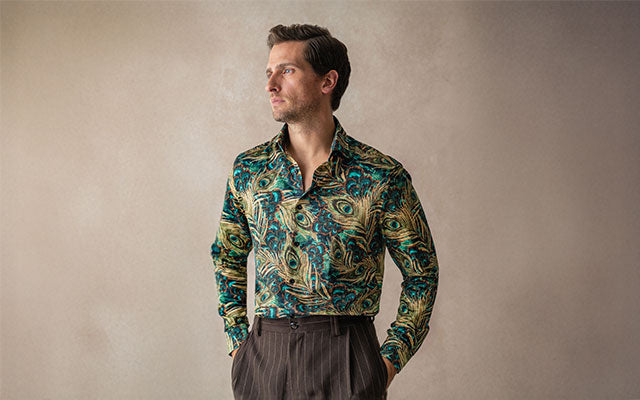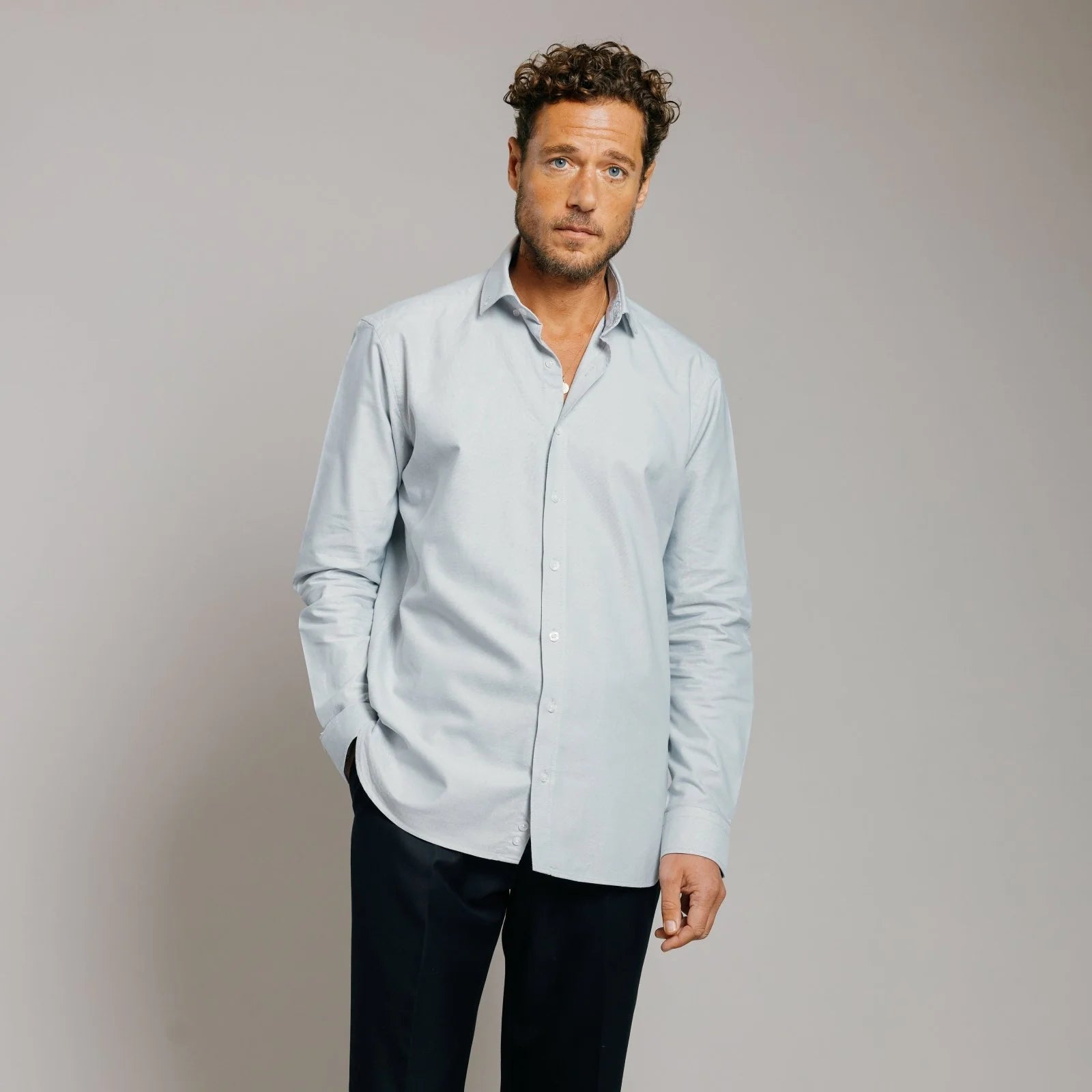The Roaring Twenties and the Birth of Modern Men's Fashion
At a glance...
- The Roaring Twenties marked a significant shift in men's fashion, with the rise of modern and more casual styles.
- The influence of the Roaring Twenties on men's fashion can still be seen today, with iconic styles that defined the era.
- The shift in men's wardrobe during the 1920s included the rise of the three-piece suit, the popularity of fedora hats, and changes in grooming and aesthetics.
- Men's fashion in the 1920s was characterised by short sleeve and long sleeve shirts in various colours, including solid colours and bright colours.
- The global impact of 1920s men's fashion was significant, with America influencing worldwide fashion trends and the Parisian touch adding elegance to menswear.
- Modern styling tips can help incorporate 1920s fashion into today's wardrobe, with vintage pieces and accessories adding a touch of nostalgia.
The Dawn of Modern Men's Fashion
The Roaring Twenties, also known as the Jazz Age, marked a significant turning point in men's fashion. With the end of World War I and the prosperity that followed, there was a shift towards more relaxed and modern styles. This was a time when men began to embrace fashion as a form of self-expression, and the United States and Europe were at the forefront of this sartorial revolution.
The Influence of the Roaring Twenties on Men's Fashion
One of the most iconic styles that emerged during the Roaring Twenties was the jazz suit. This suit featured a short jacket with wide lapels and a high-waisted, pleated trouser. It was a departure from the more formal and structured suits of the previous decade and reflected the youthful and carefree spirit of the time. Another popular accessory during this era was the wide-brimmed hat, which became synonymous with the style of the Great Gatsby and added a touch of glamour to any outfit.
Key Characteristics of 1920s Men's Fashion
Men's fashion in the 1920s was characterised by a range of key characteristics. Short sleeve and long sleeve shirts were popular, with men opting for various colours to add a pop of personality to their outfits. Solid colours were particularly favoured, but there was also a trend for more daring and vibrant hues. The use of different fabrics, such as linen and flannel, added texture and visual interest to the garments.
Iconic Styles That Defined the Era
The Roaring Twenties gave birth to several iconic styles that still resonate today. One of these styles was the rise of the three-piece suit. This ensemble consisted of a tailored jacket, matching trousers, and a vest or waistcoat. The three-piece suit represented a more formal and sophisticated look, perfect for special occasions or a day at the office. Another popular trend was the popularity of fedora hats, which added a touch of sophistication and completed the look of a well-dressed gentleman. Casual dress shoes, such as loafers and brogues, were also favoured during this time.
The Rise of the Three-Piece Suit
In menswear, the three-piece suit became a symbol of elegance and refinement during the 1920s. It was a versatile ensemble that could be dressed up or down depending on the occasion. The jacket featured a slim silhouette with fitted shoulders and a single pleat in the back for ease of movement. The trousers were high-waisted and often featured a wide leg, giving the wearer a sleek and sophisticated look. The vest or waistcoat added an extra layer of style and completed the ensemble.

The Popularity of Fedora Hats and Casual Dress Shoes
Fedora hats were a staple accessory for men during the 1920s. These wide-brimmed hats added a touch of sophistication and added an element of mystery to an outfit. They were often worn tilted at an angle and paired with a suit or smart casual attire. Casual dress shoes, such as loafers and brogues, were also popular during this time. These shoes were comfortable yet stylish, making them perfect for everyday wear.
Breaking Down the Men's Wardrobe
The 1920s saw a significant shift in men's wardrobe, with new styles and trends emerging. From suits to shirts and accessories, each component played a crucial role in defining the overall look of a well-dressed gentleman.
Suits and Their Evolution
During the 1920s, suits underwent a transformation in silhouette and style. The traditional boxy and structured look gave way to a more relaxed and slim-cut silhouette. Lapels became wider, and the use of patterns and textures added a touch of flair to the garments. Navy blue was a popular colour choice for suits, as it was versatile and timeless.
Shirts: From Stiff to Soft Collars
Shirts in the 1920s saw a shift from stiff and formal styles to more relaxed and comfortable options. The white shirt remained a classic choice, but the introduction of softer collars and cuffs added a touch of casual elegance. Cuffs were often worn with cufflinks, adding a subtle detail to the overall look. The collarless shirt, also known as the "detachable collar shirt," became popular during this decade, giving men the option to change their collar style without changing the entire shirt.
The Transition in Trousers: A Slimmer Fit
Trousers in the 1920s underwent a transition from wider, more relaxed fits to a slimmer and more streamlined silhouette. This shift was influenced by the rise of athletic and sporty styles, which emphasised a more youthful and dynamic look. Oxford bags, also known as "elephant pants," were a popular choice for younger men, featuring wide legs and a higher waist. Older men preferred trousers with a more traditional cut and a nice crease down the front.
The Shift in Grooming and Aesthetics
The Roaring Twenties not only brought changes in men's fashion but also in grooming and aesthetics. Men began to pay more attention to their appearance, embracing a more polished and well-groomed look.
Facial Hair: Declining but Still Present
While the clean-shaven look was still the norm in the 1920s, facial hair began to make a comeback. Moustaches, in particular, became popular among men who wanted to add a touch of personality to their look. However, the moustache was often kept neat and well-trimmed, reflecting the overall trend towards a more polished appearance.
Haircuts and Hairstyles of the 1920s Gentleman
The hairstyles of the 1920s were characterised by short, slicked-back hair. The most popular haircut for men was the "slicked-back undercut," which featured short sides and a longer top that was slicked back with hair tonic or pomade. This hairstyle was influenced by the glamorous and dapper looks of movie stars of the time, such as Clark Gable and Rudolph Valentino.
Formal vs. Casual: Navigating the Social Dress Codes
The 1920s brought about a shift in social dress codes, with a distinction between formal and casual attire. Understanding these dress codes was essential for navigating various social settings and occasions.
Formal Attire: Black Tie and Beyond
Formal attire in the 1920s was characterised by the black tie dress code. This meant wearing a black tuxedo or dinner jacket with a black bow tie. Beyond black tie events, there were other formal occasions that required more specific attire, such as white tie for ultra-formal events.
Casual Wear: Embracing Comfort and Style
Casual wear in the 1920s was all about embracing comfort and style. Casual shirts in various colours and patterns were paired with chinos or trousers for a relaxed yet put-together look. The rise of sportswear also influenced casual attire, with polo shirts, sweaters, and cardigans becoming popular choices.
The Global Impact of 1920s Men's Fashion
The fashion trends of the 1920s had a significant impact on a global scale. Both America and Europe played crucial roles in shaping and defining men's fashion during this era.
How America Influenced Worldwide Fashion Trends
America was at the forefront of fashion during the Roaring Twenties. The United States set the tone for modern and casual styles, influencing fashion trends worldwide. The Jazz Age and the vibrant energy of American cities like New York and Chicago inspired men's fashion across the globe.
The Parisian Touch in Menswear
Paris, known as the fashion capital of the world, added a touch of elegance and sophistication to men's fashion during the 1920s. The Parisian influence can be seen in the use of high-quality fabrics, attention to detail, and impeccable tailoring. European cities like London also played a significant role in shaping and defining men's fashion during this time.
Styling Tips for Incorporating 1920s Fashion Today
The fashion of the 1920s continues to inspire and influence modern-day style. Incorporating elements of 1920s fashion into your wardrobe can add a touch of vintage flair and individuality to your look.
Modern Takes on Classic 1920s Pieces
Vintage pieces can be incorporated into a modern wardrobe to create a unique and stylish look. Pairing a modern suit with a vintage tie or pocket square can add a touch of nostalgia and personality to your outfit. Mixing and matching different elements from different eras can create a contemporary take on classic 1920s fashion.
Accessorising with a Vintage Flair
Accessories play a crucial role in completing a look and adding a vintage flair to your outfit. A pocket square, fedora hat, or wristwatch can instantly elevate your style and give a nod to 1920s fashion. Braces, bowler hats, and tortoiseshell glasses are also popular choices for adding that vintage touch.
Frequently Asked Questions
How Can I Incorporate 1920s Styles into My Wardrobe?
Incorporating 1920s styles into your wardrobe can be a fun and creative way to express your personal style. Start by adding key elements such as a three-piece suit, wide-brimmed hat, or jazz-inspired accessories. Mix and match modern and vintage pieces to create a unique and stylish look. Remember to focus on functionality and choose pieces that can be easily incorporated into your daily wardrobe.
What Are the Must-Have Accessories to Achieve a 1920s Look?
To achieve a 1920s look, accessories play a crucial role. Must-have accessories include fedora hats, pocket squares, suspenders, bowler hats, and wristwatches. These accessories add a vintage flair to any outfit and help to complete the overall 1920s aesthetic.
The Roaring Twenties was a time of great change in men's fashion. The shift towards modern and more casual styles marked a departure from the formal and structured looks of previous decades. The influence of the Roaring Twenties can still be seen today, with iconic styles that defined the era. Incorporating elements of 1920s fashion into your wardrobe can add a touch of vintage flair and individuality to your look. So embrace the spirit of the Jazz Age and let your style roar!
Why not delve further into fashion history in our guide, From Utility to Style: Men's Fashion During and After WWII







